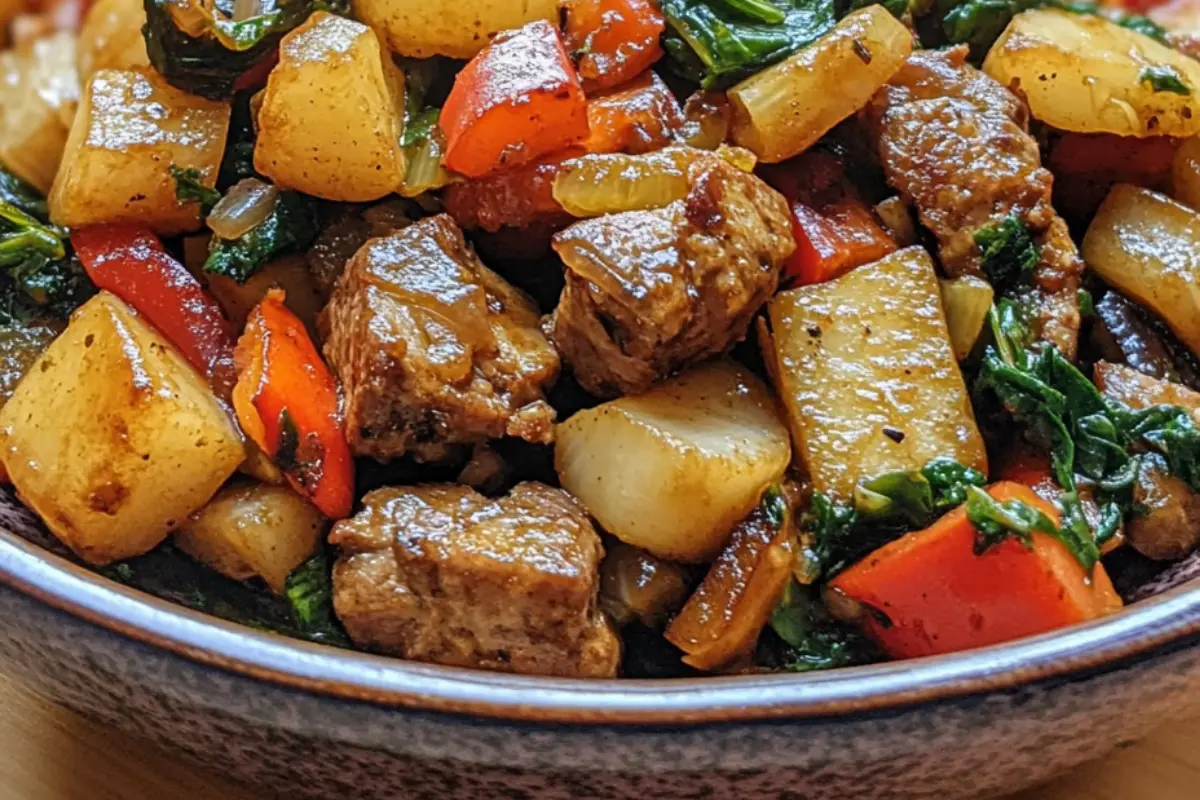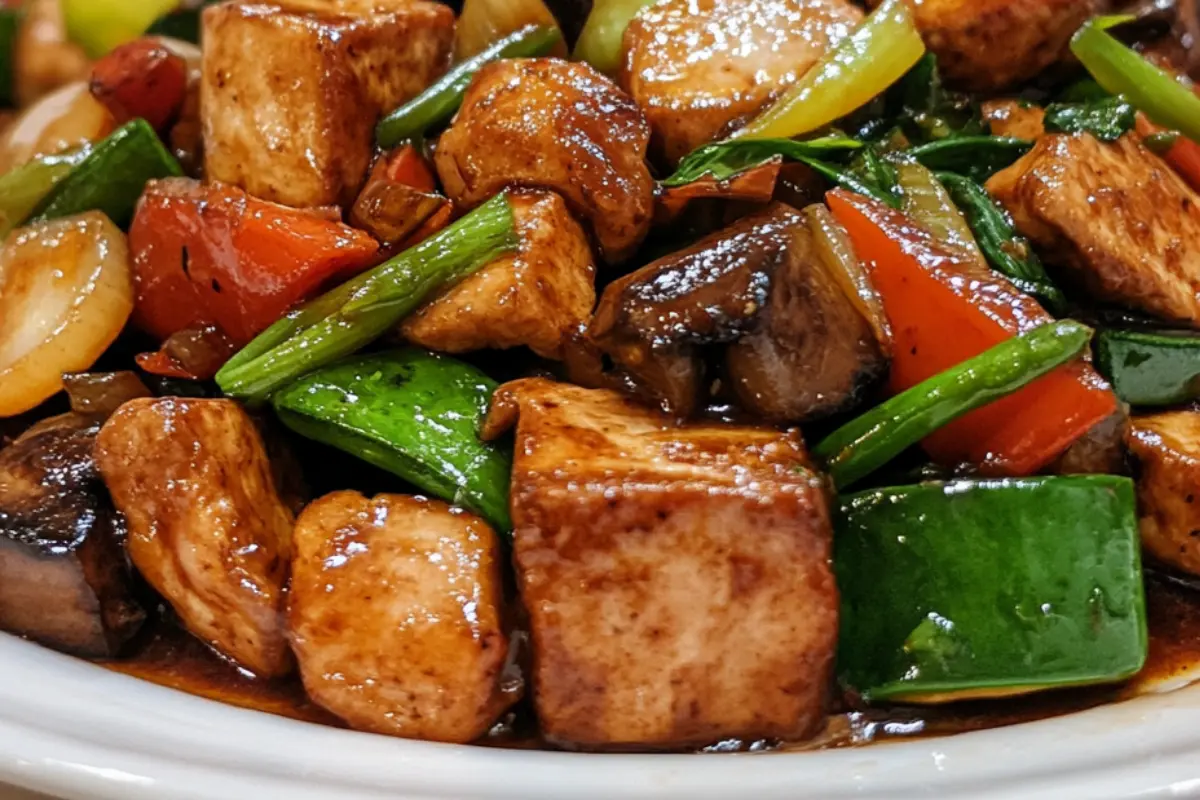Vegetable stir-fry is a staple in many kitchens, and for good reason. It’s quick, easy, and incredibly versatile, allowing you to mix and match your favorite vegetables and sauces for a meal that’s not only delicious but also packed with nutrients. Whether you’re a busy professional looking for a speedy dinner option or someone trying to eat healthier, a good stir-fry can be your go-to solution. In this article, we’ll walk you through everything you need to know to make the perfect vegetable stir-fry, from choosing the best vegetables to keeping them crisp, and even making a stir-fry without oil. Let’s get started!
What Is a Vegetable Stir-Fry?
Vegetable stir-fry is a cooking method that originated in China and has become popular worldwide due to its simplicity and the endless possibilities it offers. At its core, a stir-fry involves quickly cooking vegetables in a small amount of oil over high heat. The key is to maintain the vegetables’ vibrant color and crisp texture while infusing them with the flavors of your chosen sauces and seasonings.
Why Make a Stir-Fry? Vegetable stir-fry
Making a vegetable stir-fry is not just about throwing some veggies into a pan. It’s about creating a meal that’s healthy, flavorful, and satisfying. Stir-frying preserves the nutrients in vegetables better than other cooking methods like boiling or steaming. Plus, it’s a fantastic way to use up any leftover vegetables in your fridge, reducing food waste while providing a nutritious meal in minutes.
Choosing the Best Vegetables for Stir-Fry: Best Vegetable stir-fry
Choosing the right vegetables is crucial for a successful stir-fry. Not all vegetables are created equal when it comes to this cooking method, so it’s important to select those that will hold up well under high heat and provide a mix of textures and flavors.
List of Ideal Stir-Fry Vegetables
Some of the best vegetables for stir-frying include:
- Broccoli: Adds a nice crunch and soaks up sauces well.
- Bell Peppers: Their sweetness complements the savory flavors of stir-fry sauces.
- Carrots: They bring a natural sweetness and vibrant color.
- Snap Peas: Crisp and slightly sweet, they add texture.
- Mushrooms: Earthy and umami-rich, mushrooms absorb sauces beautifully.
- Zucchini: Mild-flavored and quick to cook, it’s perfect for stir-fry.
- Onions: Add a sharp flavor that mellows out when cooked.
Seasonal Vegetables for Stir-Fry
To make the most of your stir-fry, try incorporating seasonal vegetables. In spring, you might opt for asparagus and bok choy, while summer is perfect for zucchini and eggplant. Fall and winter bring hearty options like Brussels sprouts and sweet potatoes, which add a different dimension to your stir-fry.
Tips for Prepping Vegetables
Prepping is key to a successful stir-fry. Cut your vegetables into uniform sizes to ensure they cook evenly. Some vegetables, like carrots and broccoli, benefit from being blanched before stir-frying to reduce cooking time and help them retain their color and crunch.
How to Keep Vegetables Crisp in Stir-Fry
One of the biggest challenges when making a vegetable stir-fry is keeping the vegetables crisp. No one wants a soggy stir-fry, so it’s important to use techniques that preserve the vegetables’ texture while still cooking them through.
The Importance of Heat and Cooking Time
The key to a crisp stir-fry is cooking the vegetables over high heat and doing it quickly. High heat allows the vegetables to sear on the outside while maintaining their crunch on the inside. Start by heating your pan or wok until it’s very hot, then add the oil. Once the oil is shimmering, add the vegetables, starting with those that take longer to cook, like carrots or broccoli. Stir constantly to ensure even cooking and prevent burning. This rapid cooking method ensures that the vegetables don’t release too much water, which can lead to sogginess.
Blanching Vegetables Before Stir-Frying
Blanching is a technique that can help maintain the color and crispness of certain vegetables. To blanch, briefly boil the vegetables, then immediately transfer them to an ice bath to stop the cooking process. This step is especially useful for harder vegetables like broccoli or snap peas, which may take longer to cook in the stir-fry. After blanching, the vegetables are quickly stir-fried, reducing the overall cooking time and helping to keep them crisp.
Using the Right Pan for Stir-Fry
The type of pan you use can also impact the crispness of your vegetables. A wok is traditionally used for stir-frying because its shape allows for even heating and quick cooking. If you don’t have a wok, a large, heavy-bottomed skillet can also work. The key is to ensure that the pan is big enough to allow the vegetables to spread out in a single layer. Crowding the pan will trap steam, making the vegetables soft and soggy instead of crisp.
The Best Sauce for Vegetable Stir-Fry
A good stir-fry sauce can elevate your dish, balancing flavors and adding depth. Whether you prefer something sweet, savory, or a bit spicy, there’s a stir-fry sauce out there for you.
Popular Stir-Fry Sauces
Some of the most popular sauces for vegetable stir-fry include:
- Soy Sauce: A classic, adds a salty, umami flavor.
- Oyster Sauce: Slightly sweet and rich, perfect for a more complex flavor.
- Hoisin Sauce: Sweet, tangy, and thick, great for a bold flavor.
- Teriyaki Sauce: Sweet and savory, a favorite in many households.
- Garlic Sauce: Spicy and savory, ideal for those who love a bit of heat.
How to Make a Simple Stir-Fry Sauce at Home
Making your own stir-fry sauce is easy and allows you to control the ingredients. A basic stir-fry sauce might include:
- Soy Sauce (3 tablespoons)
- Sesame Oil (1 teaspoon)
- Rice Vinegar (1 tablespoon)
- Honey or Brown Sugar (1 tablespoon)
- Minced Garlic (2 cloves)
- Cornstarch (1 teaspoon) mixed with water to thicken
Mix all the ingredients together and add them to your stir-fry in the last minute of cooking. This will allow the sauce to coat the vegetables without making them soggy.
Adjusting Sauces for Different Dietary Needs
Stir-fry sauces can be easily adjusted to meet different dietary needs. For a gluten-free version, use tamari instead of soy sauce. If you’re reducing sugar, you can substitute honey with a low-calorie sweetener or omit it entirely. For a vegan option, ensure that any pre-made sauces don’t contain fish or oyster sauce, and opt for a plant-based alternative like hoisin sauce.
Making a Stir-Fry Without Oil
For those looking to reduce their oil intake, making a stir-fry without oil is entirely possible. This method can still yield a delicious and healthy dish, packed with flavor and nutrition.
Health Benefits of Oil-Free Stir-Fry
Cooking without oil can be a healthier option, especially if you’re trying to lower your calorie intake or reduce saturated fats in your diet. By avoiding oil, you eliminate the extra calories and fats that come with it, making your stir-fry lighter and easier to digest. This method is also ideal for those following a whole-food, plant-based diet.
Alternative Cooking Methods
To replace the function of oil, you can use alternative methods such as:
- Water or Broth Stir-Frying: Instead of oil, use a small amount of water or vegetable broth to cook your vegetables. Start with a few tablespoons and add more as needed to prevent sticking. This method works particularly well with non-stick pans or well-seasoned woks.
- Steaming: Lightly steaming vegetables before stir-frying them in a bit of water can help soften them up and infuse them with flavor. This method is useful for harder vegetables like carrots or broccoli.
- Using Non-Stick Cookware: Non-stick pans allow you to cook without oil while still achieving a good sear on your vegetables. Make sure your pan is preheated before adding the vegetables to prevent sticking.
How to Enhance Flavor Without Oil
Without oil, you can enhance the flavor of your stir-fry by using bold seasonings and sauces. Garlic, ginger, soy sauce, and a splash of rice vinegar can add depth to the dish. To bring in some richness, try adding a small amount of tahini or nut butter to your sauce, or toss in toasted sesame seeds at the end of cooking. Fresh herbs like cilantro or basil can also brighten up the dish.
Step-by-Step Vegetable Stir-Fry Recipe
Now that we’ve covered all the essentials, let’s dive into the step-by-step recipe for making a delicious vegetable stir-fry.
Ingredients List
- 2 cups broccoli florets
- 1 bell pepper, sliced
- 1 carrot, julienned
- 1 zucchini, sliced
- 1 cup snap peas
- 1 onion, sliced
- 2 cloves garlic, minced
- 1 tablespoon ginger, minced
- 3 tablespoons soy sauce (or tamari for gluten-free)
- 1 tablespoon sesame oil (optional)
- 1 tablespoon rice vinegar
- 1 teaspoon cornstarch mixed with 2 tablespoons water
- Cooked rice or noodles for serving
- Optional toppings: sesame seeds, green onions, fresh herbs
Cooking Instructions
- Prep the Vegetables: Wash and cut all vegetables into uniform pieces for even cooking.
- Blanch Harder Vegetables: If desired, blanch broccoli and carrots in boiling water for 2 minutes, then transfer to an ice bath.
- Heat the Pan: Heat a large wok or skillet over high heat. If using oil, add it now and swirl to coat the pan.
- Stir-Fry Vegetables: Add the garlic and ginger, stir for 30 seconds until fragrant. Then add the onions, and stir for 1-2 minutes. Add the rest of the vegetables, starting with the ones that take longer to cook. Stir constantly for 3-5 minutes until the vegetables are tender-crisp.
- Add the Sauce: Pour in the soy sauce, sesame oil (if using), and rice vinegar. Stir well. Add the cornstarch slurry to thicken the sauce. Cook for another minute until the sauce coats the vegetables.
- Serve: Remove from heat and serve the stir-fry over cooked rice or noodles. Garnish with sesame seeds, green onions, or fresh herbs as desired.
Serving Suggestions for Vegetable stir-fry
This vegetable stir-fry pairs well with steamed jasmine rice, brown rice, or your favorite noodles. For added protein, you can toss in tofu, tempeh, or your choice of plant-based protein. Enjoy it as a main dish or as a side to complement other Asian-inspired meals.
Frequently Asked Questions: Vegetable stir-fry
Stir-frying is a versatile cooking method, but it can raise a few questions, especially if you’re new to it. Here are answers to some of the most common questions people have about making a vegetable stir-fry.
What Vegetables Are Best for Stir-Fry?
The best vegetables for stir-fry are those that maintain their texture and absorb flavors well. Some of the top choices include:
- Broccoli: Adds a hearty crunch.
- Bell Peppers: Sweet and colorful, they cook quickly and pair well with most sauces.
- Carrots: Provide a sweet, earthy flavor and vibrant color.
- Snap Peas: Add a sweet, crisp texture.
- Mushrooms: Absorb sauces well and add a savory, umami flavor.
- Onions: Add a sharp, aromatic base to the dish.
The key is to choose vegetables that cook at similar rates, or cut them accordingly, to ensure even cooking.
How Do You Keep Vegetables Crisp in Stir-Fry?
To keep your vegetables crisp in a stir-fry, follow these tips:
- Cook over High Heat: Stir-frying is all about quick cooking at high temperatures, which helps seal in the vegetables’ natural moisture while keeping them crisp.
- Don’t Overcrowd the Pan: Overcrowding traps steam and results in soggy vegetables. Cook in batches if necessary.
- Blanch Vegetables: Blanching harder vegetables like broccoli and carrots before stir-frying can help them cook faster while retaining their crunch.
- Use a Wok or Large Pan: The shape of a wok or a large pan allows for even heating, which is crucial for maintaining texture.
What Sauce Is Best for Vegetable Stir-Fry?
The best sauce for your stir-fry depends on your personal taste. Here are a few popular options:
- Soy Sauce: A classic choice, providing a salty, umami flavor.
- Oyster Sauce: Slightly sweet and rich, often used in Chinese stir-fries.
- Hoisin Sauce: Sweet and tangy, great for adding a bold flavor.
- Teriyaki Sauce: Sweet and savory, commonly used in Japanese-style stir-fries.
- Garlic Sauce: Adds a punch of flavor with a bit of heat.
You can also make your own stir-fry sauce at home using a combination of soy sauce, vinegar, a sweetener like honey, and some cornstarch to thicken.
Can You Make Vegetable stir-fry Without Oil?
Yes, you can make a stir-fry without oil! Here are a few methods:
- Water or Broth Stir-Frying: Use a small amount of water or vegetable broth instead of oil. This method works best with non-stick cookware.
- Steaming: Lightly steam the vegetables before stir-frying them with a small amount of liquid.
- Non-Stick Cookware: A good non-stick pan allows you to cook without oil while still achieving a good sear on the vegetables.
Cooking without oil can reduce the calorie content of your dish and make it a healthier option overall.
Conclusion and Final Tips on Vegetable stir-fry
Making a vegetable stir-fry is a quick and healthy way to enjoy a variety of flavors and textures in one dish. By choosing the right vegetables, using high heat, and selecting the best sauce, you can create a delicious and satisfying meal. Whether you prefer your stir-fry with or without oil, the key is to experiment and find the combination that works best for you.
Key Takeaways
- Keep it Simple: Choose a few key vegetables that cook at the same rate.
- Cook Quickly: Use high heat to sear the vegetables and keep them crisp.
- Flavor Matters: A good sauce can elevate your stir-fry to the next level.






